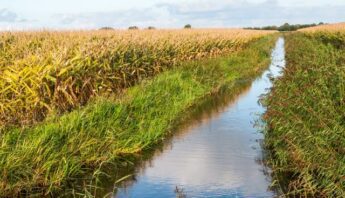For Immediate Release: September 15, 2014
Contact: Paul Towers, PAN, 916-216-1082
Results of water study ignored or misstated
Last week, the United States Geological Survey (USGS) released a new study entitled “Pesticides in U.S. Streams and Rivers: Occurrence and Trends during 1992-2011” in the journal Environmental Science and Technology, documenting pesticides in U.S. rivers and streams over a 20-year period.
For the past two decades, pesticides were found over 95% of the time streams were sampled in agricultural, urban, and mixed-land-use watersheds. In agricultural areas, one or more pesticide compound was found at levels above “safe” chronic exposure levels for aquatic life in more than 60% of the samples.
In their news release on the study, the USGS states that “pesticides continue to be a concern for aquatic life in many of the Nation’s rivers and streams.” Yet media coverage of the study has misrepresented the findings, understating the risk to aquatic life and failing to acknowledge limitations of the report, especially regarding agricultural pesticide exposures.
Emily Marquez, PhD, a staff scientist at Pesticide Action Network, released the following statement in response to the new study and misleading media coverage:
“It's concerning that well over half our streams in agricultural areas contain one or more pesticides at levels known to be harmful to fish or other aquatic life. These pesticides threaten the web of life that supports prosperous farming and healthy communities.
These levels of concern were found despite the fact that the USGS report ignored some of the most widely used pesticides in the United States, especially in agricultural areas. The pesticides assessed during 1992-2011 by the agency represent less than half the number of synthetic pesticides currently used in U.S. agriculture. In addition, use of some pesticides that were not monitored have increased dramatically during this time period. For example, neonicotinoid insecticides (‘neonics’) not assessed by USGS for this study, were found in 75% of Midwest waterways surveyed by the same agency in a separate study. The greatest amount of bee-harming neonics comes from seed coatings on corn and soy crops.
The focus on levels that exceed current safety benchmarks also understates much of the problem. EPA safety benchmarks can be less protective than levels at which harm has been identified by independent scientists. As a result, exceedances are a poor measure for protection. Even in very small amounts pesticides like atrazine, an endocrine disruptor, is known to act at low doses as a gonadotoxin in vertebrates.
We find it very concerning that the media coverage of the USGS findings has largely downplayed the risks. The fact is that even with its limitations, the data clearly signal that our current reliance on high inputs of agricultural pesticides needs to change. "







